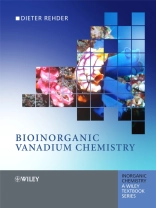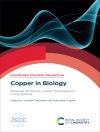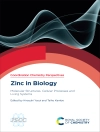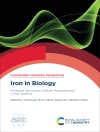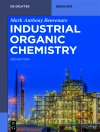Vanadium is named after Vanadis, the most aristocratic of Norse goddesses, who symbolises beauty and fertility – essential features of vanadium chemistry. It is a ubiquitous trace element, with a surprising range of biological functions.
In Bioinorganic Vanadium Chemistry, Dieter Rehder addresses the major aspects of vanadium chemistry related to living organisms and the mutual impact between biological and inorganic vanadium chemistry. Topics covered include:
* the history, natural occurrence, distribution and impact of vanadium
* inorganic aspects of the function of vanadium in biological systems
* interaction of aqueous vanadate and vanadyl with biogenic ligands
* vanadium coordination compounds
* the vanadium-carbon bond
* methods of characterisation of biogenic and model vanadium systems (EPR and ENDOR for oxovanadium(IV); ¯51V NMR for vanadium(V); XAS)
* vanadium in ascidians and polychaeta worms
* the concentration of vanadium in the form of amavadin by Amanita mushrooms
* vanadate-dependent haloperoxidases
* vanadium and the nitrogen cycle
* vanadate as energiser for bacteria, and vanadophores
* medicinal aspectsm including the anti-diabetic potential of vanadium compounds
* interaction of vanadium with proteins and protein substrates
* vanadium and phosphate-metabolising enzymes
Bioinorganic Vanadium Chemistry conveys the essential aspects of vanadium bioinorganic chemistry, making this book a valuable complement to more general bioinorganic chemistry texts and more specialized topical reviews for researchers and students alike.
İçerik tablosu
Preface.
1. Introduction and Background.
1.1. History.
1.2. Occurrence, Distribution and Impact.
2. Inorganic and Coordination Compounds of Vanadium.
2.1. Inorganic Aspects of the Function of Vanadium in Biological
Systems.
2.2. Interaction of Aqueous Vanadate and Vanadyl with Biogenic
Ligands.
2.3. Vanadium Coordination Compounds.
2.4. The Vanadium-Carbon Bond.
3. Physico-chemical Methods for the Characterisation of
Native and Model Vanadium Compounds.
3.1. ¯51V NMR Spectroscopy.
3.2. NMR of Other Nuclei.
3.3. EPR Spectroscopy.
3.4. ESEEM and ENDOR Spectroscopies.
3.5. Optical Spectroscopies.
3.6. X-ray Absorption Spectroscopy.
4. Naturally Occurring Vanadium Compounds.
4.1 Vanadium in Ascidians and Polychaeta Worms.
4.2. Amavadin.
4.3. Vanadate-dependent Haloperoxidases.
4.4. Vanadium and the Nitrogen Cycle.
4.5. Vanadate as Energiser for Bacteria, and Vanadophores.
5. Inferences of Vanadium Compounds on Cellular
Functions.
5.1. Medicinal Aspects of Vanadium.
5.2. Interaction of Vanadium with Proteins and Protein
Substrates.
6. Epilogue.
References.
Index.
Yazar hakkında
Dieter Rehder, Professor of Chemistry, University of Hamburg
Professor Dieter Rehder is one of the world’s leading researchers in the area of chemistry/biochemistry of vanadium. He will be awarded the ‘Vanadis Award’ (an award for specific achievements in vanadium chemistry) at the Inorganic ACS meeting/5th International Symposium on Vanadium Chemistry in San Francisco, September this year (2006).
